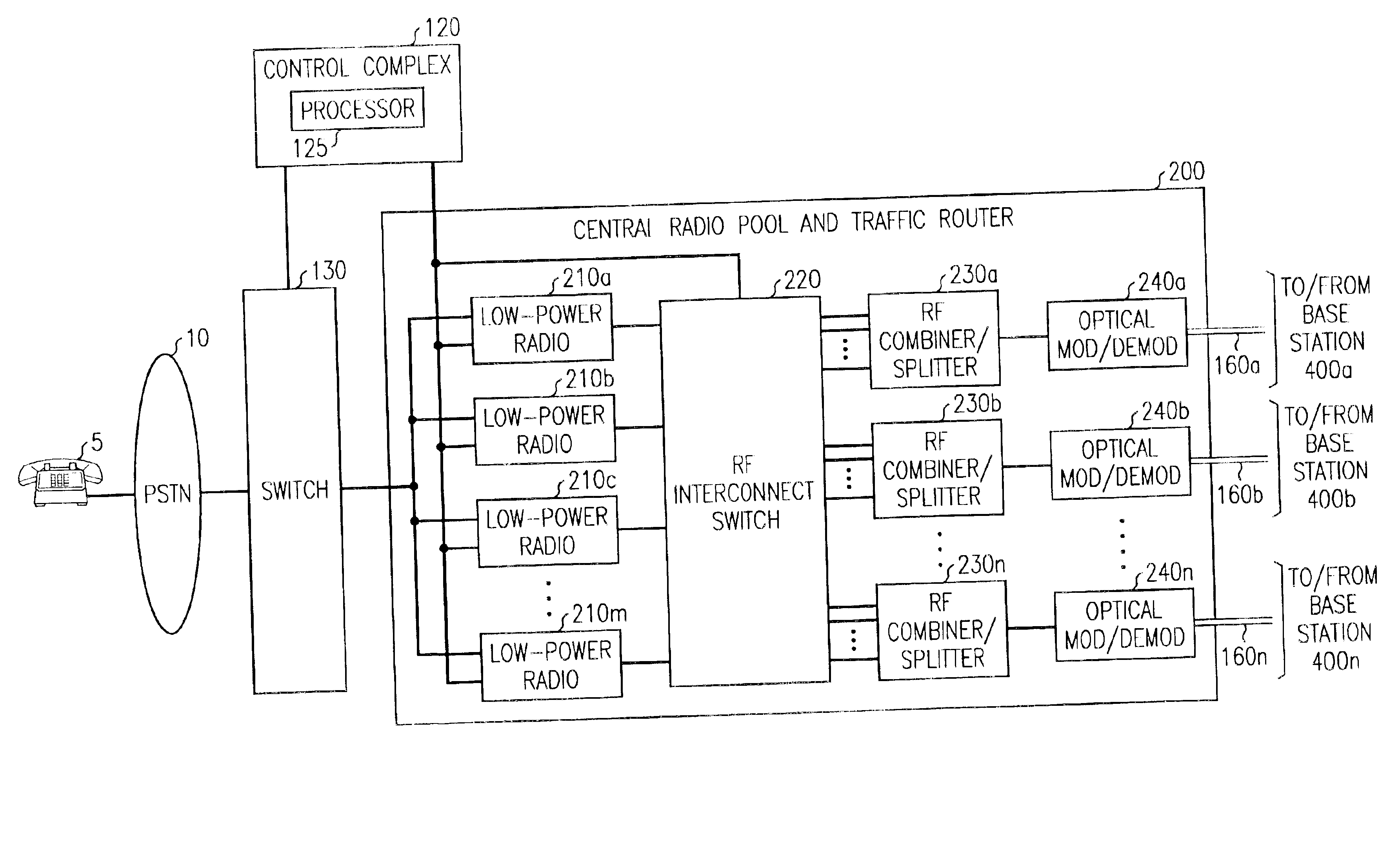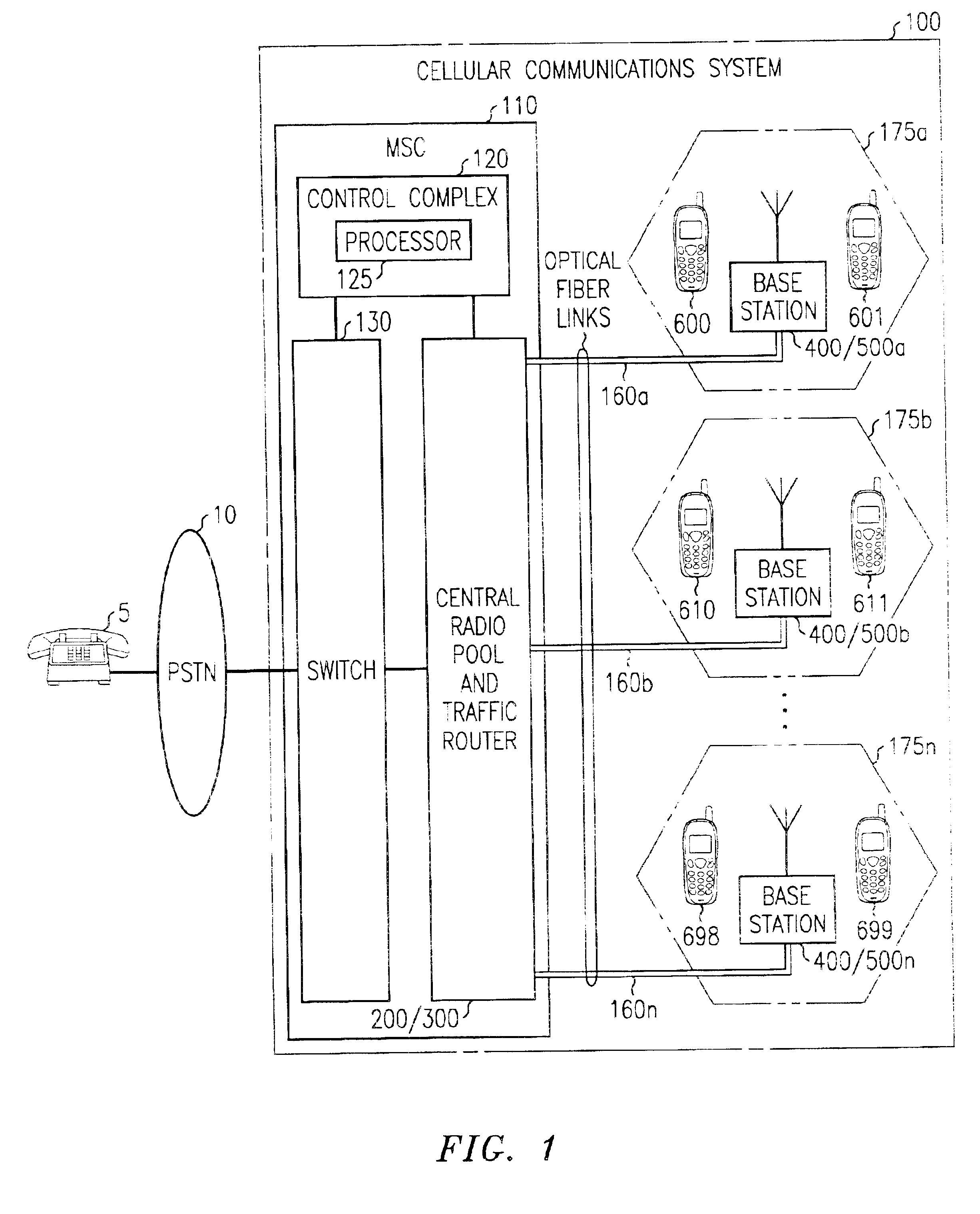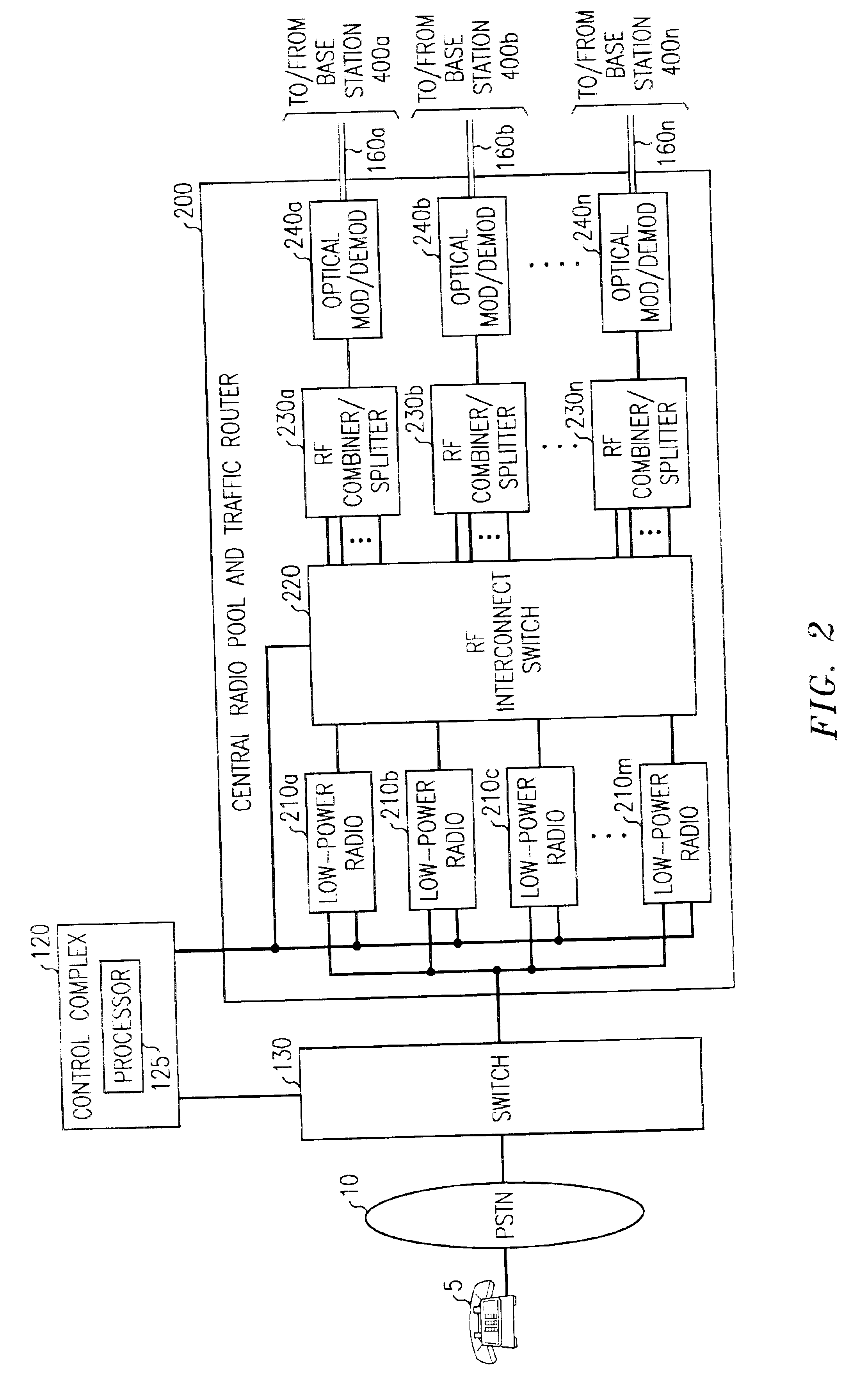Cellular communications system featuring a central radio pool/traffic router
a technology of cellular communications and traffic routers, applied in the field of cellular systems, can solve the problems of high cost, waste of resources, and many radios in the base station, and achieve the effects of reducing system costs, reducing maintenance costs, and efficient use of radio resources
- Summary
- Abstract
- Description
- Claims
- Application Information
AI Technical Summary
Benefits of technology
Problems solved by technology
Method used
Image
Examples
Embodiment Construction
FIG. 1 depicts cellular communications system 100 comprising Mobile Switching Center (MSC) 110, fiber optic links 160a . . . n, base stations 400 / 500a . . . n, and cell phones 600, 601, 610, 611, 698, and 699. Base stations 400 / 500a . . . n, operating in corresponding cells 175a . . . n, transmit and receive radio signals to and from cell phones operating in cells 175a . . . n. Fiber optic links 160a . . . n are used to convey traffic and control signals between MSC 110 and base stations 400 / 500a . . . n. MSC 110 includes switch 130 that interfaces to Public Switch Telephone Network (PSTN) 10, control complex 120 that includes processor 125, and central radio pool and traffic router (CRP / TR) 200 / 300.
A first exemplary embodiment of the present invention can be better understood with reference to FIGS. 1, 2, and 4. As illustrated in FIG. 2, central radio pool and traffic router (CRP / TR) 200 comprises low-powered digital and / or analog radios 210a . . . m, Radio Frequency (RF) inter-con...
PUM
 Login to View More
Login to View More Abstract
Description
Claims
Application Information
 Login to View More
Login to View More - R&D
- Intellectual Property
- Life Sciences
- Materials
- Tech Scout
- Unparalleled Data Quality
- Higher Quality Content
- 60% Fewer Hallucinations
Browse by: Latest US Patents, China's latest patents, Technical Efficacy Thesaurus, Application Domain, Technology Topic, Popular Technical Reports.
© 2025 PatSnap. All rights reserved.Legal|Privacy policy|Modern Slavery Act Transparency Statement|Sitemap|About US| Contact US: help@patsnap.com



